Blood Basics
Blood is a specialized body fluid. It has four main components: plasma, red blood cells, white blood cells, and platelets. The blood that runs through the veins, arteries, and capillaries is known as whole blood—a mixture of about 55% plasma and 45% blood cells. About 7% to 8% of your total body weight is blood. An average-sized man has about 12 pints of blood in his body, and an average-sized woman has about 9 pints.
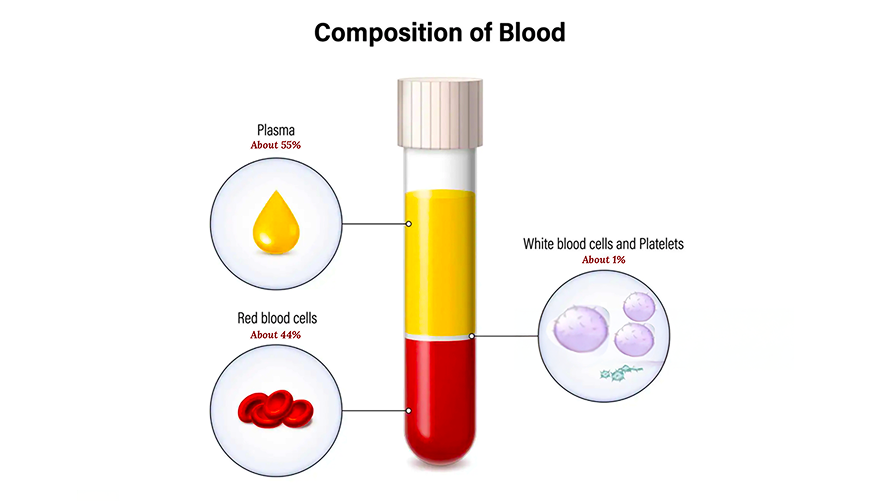
Functions of Blood
![]()
Transporting oxygen and nutrients to the lungs and tissues
![]()
Forming blood clots to prevent excess blood loss.
![]()
Carrying cells and antibodies that fight infection
![]()
Bringing waste products to the kidneys and liver, which filter and clean the blood.
![]()
Regulating body temperature.
The Components of Blood and
their Importance
Plasma
The liquid component of blood is called plasma, a mixture of water, sugar, fat, protein, and salts. The main job of plasma is to transport blood cells throughout the body along with nutrients, waste products, antibodies, clotting proteins, chemical messengers (such as hormones), and proteins that help maintain the body's fluid balance.
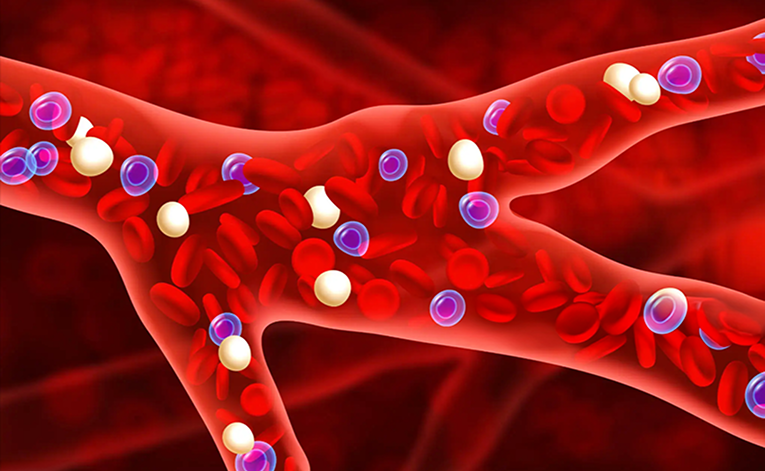
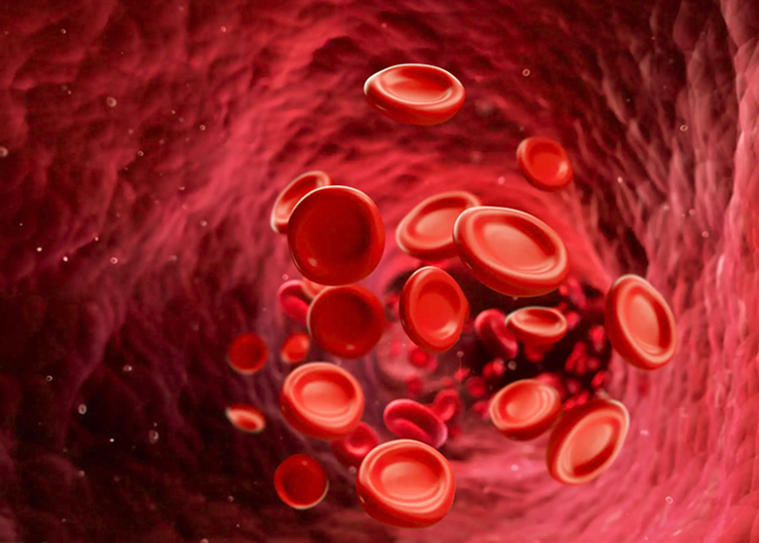
Red Blood Cells (also called erythrocytes or RBCs)
Known for their bright red color, red blood cells are the most abundant cells in the blood, accounting for about 40% to 45% of its volume. The shape of a red blood cell is a biconcave disk with a flattened center -- in other words, both faces of the disk have shallow, bowl-like indentations (similar to a donut).
Production of red blood cells is controlled by erythropoietin (EPO), a hormone produced primarily by the kidneys. Red blood cells start as immature cells in the bone marrow and, after approximately 7 days of maturation, are released into the bloodstream. Unlike many other cells, red blood cells have no nucleus and can easily change shape, helping them fit through the various blood vessels in the body. However, while the lack of a nucleus makes a red blood cell more flexible, it also limits the cell’s lifespan as it travels through the smallest blood vessels, damaging the membrane and depleting its energy supplies. A red blood cell survives an average of 120 days.
Red blood cells contain a special protein called hemoglobin, which helps carry oxygen from the lungs to the rest of the body and then returns carbon dioxide to the lungs for exhalation. Blood appears red because of the large number of red blood cells, which get their color from hemoglobin. The percentage of whole blood volume that is made up of red blood cells is called hematocrit, a common measure of red blood cell levels.
White Blood Cells (also called leukocytes)
White blood cells protect the body from infection. They are far fewer in number than red blood cells, accounting for about 1% of the blood.
The most common type of white blood cell is the neutrophil, which is the body’s first line of defense and accounts for 55% to 70% of the total white blood cell count. Each neutrophil lives less than a day, so bone marrow must constantly produce new neutrophils to maintain protection against infection. Neutrophil transfusions are generally not effective since they do not remain in the body for very long.
The other major type of white blood cell is the lymphocyte. There are two main populations of these cells: T lymphocytes (T cells) and B lymphocytes (B cells). T cells help regulate the function of other immune cells and directly attack infected cells and tumors. B cells produce antibodies—proteins that specifically target bacteria, viruses, and other foreign materials.
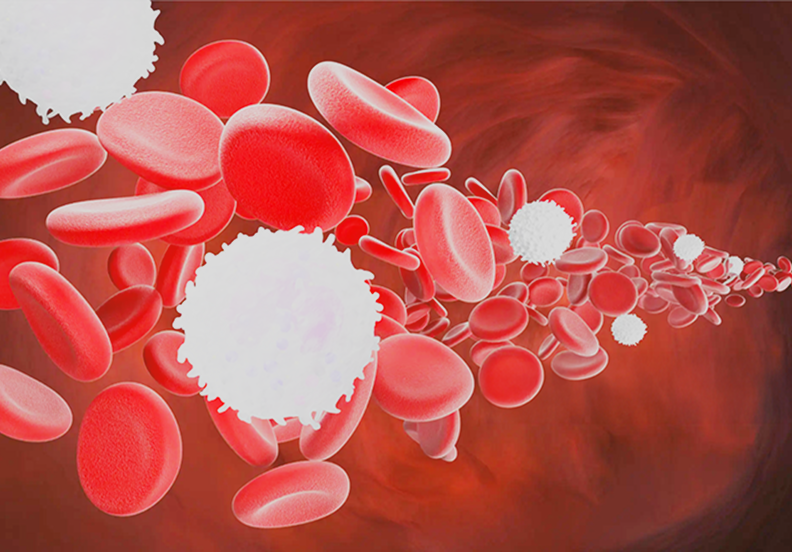
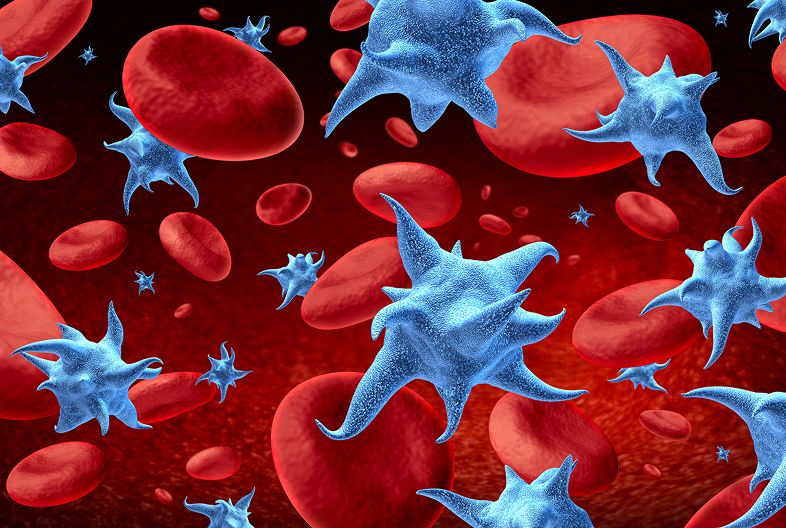
Platelets (also called thrombocytes)
Unlike red and white blood cells, platelets are not actually cells but rather small cell fragments. Platelets help the blood-clotting process (coagulation) by gathering at the site of an injury, sticking to the lining of the injured blood vessel, and forming a platform on which blood coagulation can occur. This results in the formation of a fibrin clot, which covers the wound and prevents blood from leaking out. Fibrin also forms the initial scaffolding upon which new tissue develops, thus promoting healing.
A higher-than-normal number of platelets can cause unnecessary clotting, which can lead to strokes and heart attacks; however, thanks to advances in antiplatelet therapy, treatments are available to help prevent these potentially fatal events. Conversely, a lower-than-normal platelet count can lead to extensive bleeding.
Complete Blood Count (CBC)
A complete blood count (CBC) test gives your doctor important information about the types and numbers of cells in your blood, especially red blood cells and their percentage (hematocrit) or protein content (hemoglobin), white blood cells, and platelets. The results of a CBC may help diagnose conditions like anemia, infection, and other disorders. The platelet count and plasma clotting tests (prothrombin time, partial thromboplastin time, and thrombin time) may be used to evaluate bleeding and clotting disorders.
Your doctor may also perform a blood smear, which involves examining your blood cells under a microscope. In a normal blood smear, red blood cells appear as regular, round cells with a pale center. Variations in the size or shape of these cells may suggest a blood disorder.
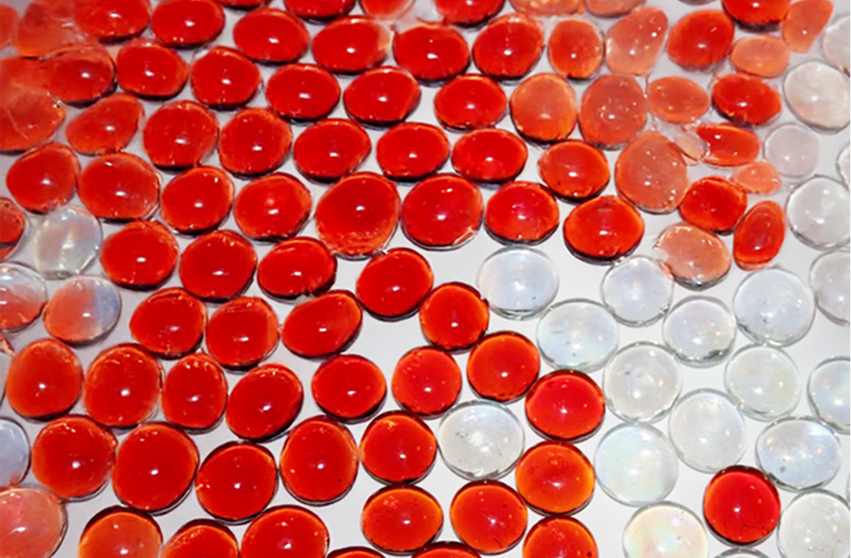
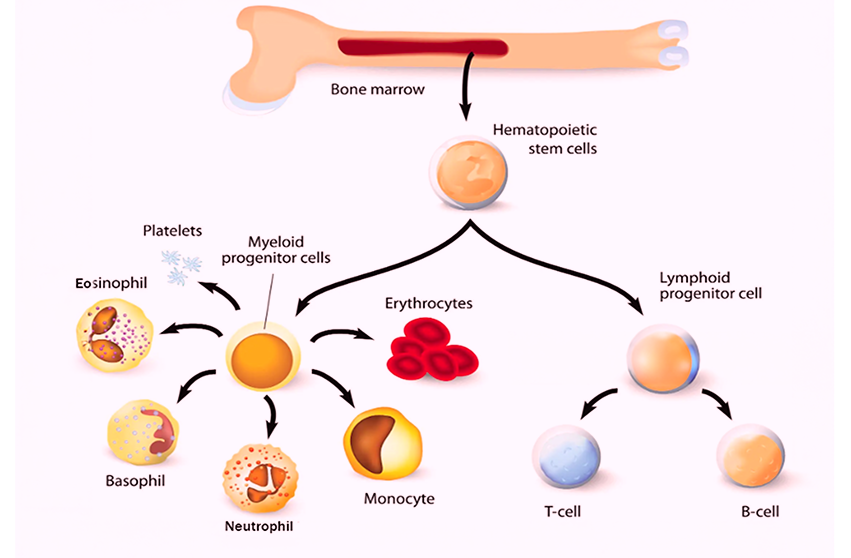
Where Do Blood Cells Come From?
Blood cells develop from hematopoietic stem cells and are formed in the bone marrow through the highly regulated process of hematopoiesis. Hematopoietic stem cells can differentiate into red blood cells, white blood cells, and platelets. These stem cells circulate in the blood and bone marrow in people of all ages, as well as in the umbilical cords of newborns. Stem cells from all three sources may be used to treat a variety of diseases, including leukemia, lymphoma, bone marrow failure, and various immune disorders.
Where Can I Find More Information?

Patient Groups
If you are interested in learning more about blood diseases and disorders, here are a few resources that may be useful.
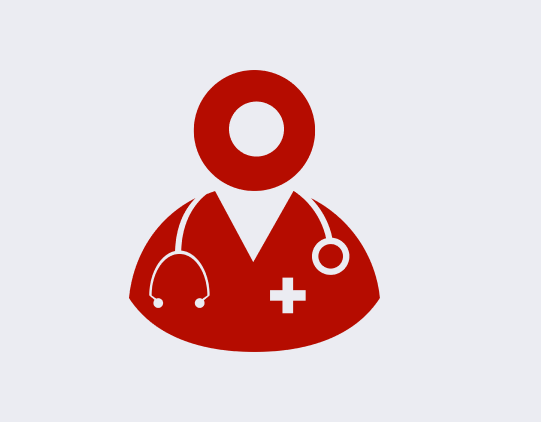
Find a Hematologist
Search a database of practicing hematologists in your area to find the best treatments available.
Patient Resources
Receive support on your blood health journey with essential information and tools to help you manage your health and treatment.
